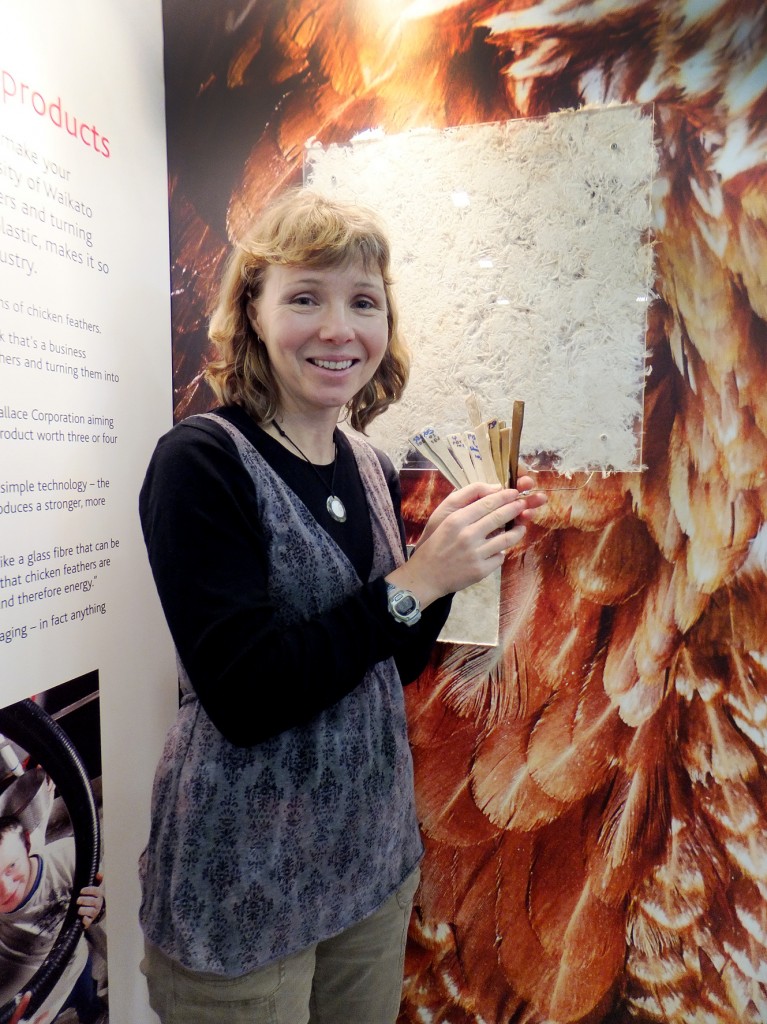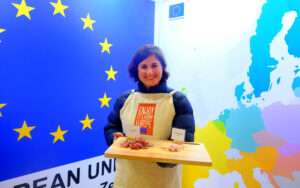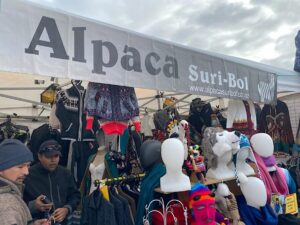By-product may have other uses
Chicken feathers, a throw-away by-product of the meat industry, may one day be worked into
boat hulls, ceiling panels and packaging.
Chicken feathers, a throw-away by-product of the meat industry, may one day be worked into
boat hulls, ceiling panels and packaging.
New Zealand produces 50,000 tons of chicken feathers each year. They are plentiful,
lightweight and cheap, as well as eco friendly.

These fibres can be combined with resins like Polypropylene, Polyethalene and PLA, all of
which are either biodegradable or recyclable plastics, to make the final product stronger and
lighter – ideal for marine applications.
The finished plastic is roughly 50% feather fibre, and 50% resin and can be dyed any desired
colour.
Associate Professor Kim Pickering, part of the team of three scientists who have been
heading the research, has been busy explaining the processes to curious passers-by at the
University of Waikato stand in the Fieldays Pavilion.
“We’re eating more chicken now, so there’s going to be even more fibre [in the future].”
Pickering cautions that this is still a work in progress, with new discoveries being made on a
regular basis. Recently, a member of the team discovered that feathers from different parts of
the chicken have different properties which may be best suited to separate products.
“The feathers for flight are hollow, which is good in terms of insulation and lightweight
material.” Alternatively, feathers from the undercoat are not hollow and may prove to be
slightly stronger.
Feathers used in the research have been provided by Wallace Corporation, who own
slaughterhouses in the Waikato and have worked closely with the university on the project.




